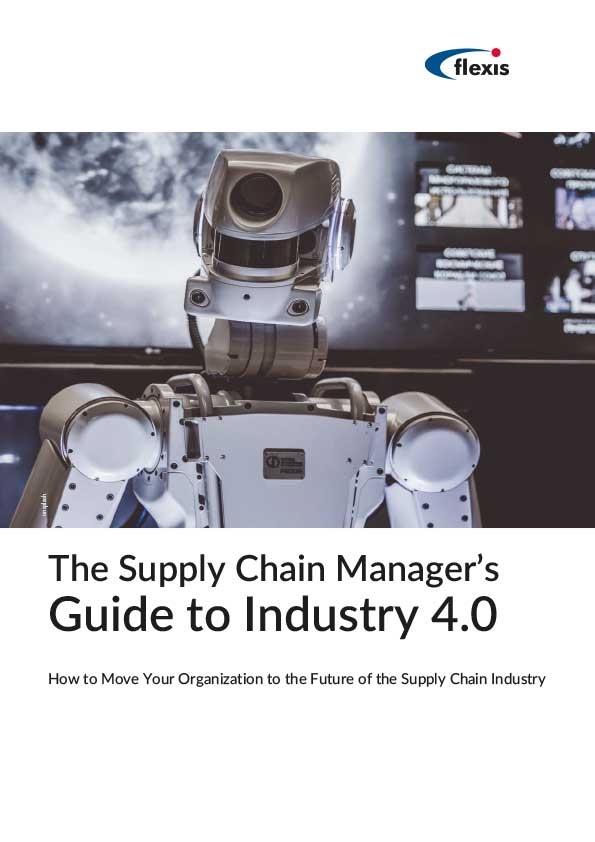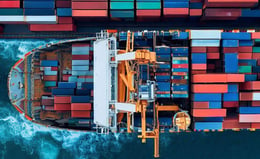5 Hurdles in Combating Supply Chain Risk
Brian Hoey - January 18, 2018

 As the world of manufacturing becomes ever more competitive, many are trying to stay ahead of the competition by driving toward a lean supply chain. While this approach is no doubt a boon for identifying potential cost savings and supply chain optimizations, it can often leave companies more vulnerable to supply chain risk. As inefficiencies and redundancies are pared down, manufacturers can become less insulated against possible uncertainty and disruptions. As a result, supply chain managers are now more than ever searching for ways to combat risk and preserve the value-added improvements of their lean supply chains. Even in a market filled with unpredictable externalities, risk management can have a tremendous impact on the bottom line, but for variant-rich industries managing risk is often easier said than done. Let’s take a look at some of the biggest hurdles companies face in combating supply chain risk.
As the world of manufacturing becomes ever more competitive, many are trying to stay ahead of the competition by driving toward a lean supply chain. While this approach is no doubt a boon for identifying potential cost savings and supply chain optimizations, it can often leave companies more vulnerable to supply chain risk. As inefficiencies and redundancies are pared down, manufacturers can become less insulated against possible uncertainty and disruptions. As a result, supply chain managers are now more than ever searching for ways to combat risk and preserve the value-added improvements of their lean supply chains. Even in a market filled with unpredictable externalities, risk management can have a tremendous impact on the bottom line, but for variant-rich industries managing risk is often easier said than done. Let’s take a look at some of the biggest hurdles companies face in combating supply chain risk.
Forecasting/What-if Scenarios
While the past is frequently instructive when it comes to optimizing processes and managing factories, the foundations of risk management are fundamentally future-oriented. No business can predict the future, but where many businesses stumble when it comes to mitigating risks is predicting those risks in the first place. After all, accurate forecasts require a point-to-point understanding of the way a company manages its resources, accounting for demand, suppliers, manufacturing processes, and transport in order to detect potential bottlenecks and understand the ripple effects of possible disruptions.
In addition to addition to requiring tools that can accurately forecast demand and throughput far in advance, successful risk management depends on the ability to plan for disruptive scenarios before they happen. This entails both predicting disruptions and simulating the effects of possible solutions on the entire supply chain. In an ideal world, planners would have access to sufficient real-time data about their operations to generate “what-if” scenarios that model the outcomes of different possible strategies for responding to crises. Unfortunately, reaching this level of data visibility is often a significant hurdle in itself, requiring a cross-operational commitment to reducing siloes and building a transparent Industry 4.0 supply chain.
Taking Control of Logistics
Once you’ve incorporated forecasting into your risk management process, the next hurdle is turning those predictions into actionable logistics paradigms. Essentially, taking control of logistics means bridging the gap between S&OP and S&OE to ensure that risk planners have the ability to implement changes where necessary. This, too, will require a high degree of visibility and transparency, not just in terms of the supply chain itself, but with regards to the interrelations between various value points along the chain. The result, however, can be leaner, more seamless workflows across all processes.
Proactive Monitoring
A recent study suggested that almost a third of supply chain disruptions resulted from extreme weather events. Patterns of snow and extreme cold like the ones recently on display across the United States often mean shipping delays and increased transport risk in general, while natural disasters more broadly can cause warehouse and factory power outages, impassible roads, and other disruptive conditions that make the on-time creation and delivery of a product seem unfathomable. Though some disruptions of this sort are unavoidable, the rise of Industry 4.0 is increasingly making these difficulties easier to manage. There may be an initial hurdle, but manufacturers and shippers that embrace IoT sensors and devices can reap a number of benefits:
- Connectivity for shipping and transport: businesses can track shipments in real-time, enabling planners to preemptively adjust problematic routes and perceive potential delays far in advance.
- Maintenance scheduling: with both trucks and factory equipment, companies can monitor usage and usage patterns in order to determine the need for maintenance downtime in advance, thereby averting any unexpected interruptions in service.
- Inventory tracking: companies can gain more accurate information about warehouse usage and part or product availability, while enabling a more reactive digital infrastructure that lets users access real-time data about existing stock, throughput, and supply streams.
Flexibility/Adaptability
Another potential hurdle that can be particularly acute for lean supply chains is maintaining adaptability. Even once the supply chain is optimized for its most efficient possible usage, manufacturers must still put themselves in a position to be agile rather than reactive. This means not just having the predictive capabilities to predict potential bottlenecks, but a high degree of end-to-end (E2E) visibility that covers not just one’s own processes, but also those of relevant shippers and suppliers. Meeting the challenges of rapid fluctuations in supply or demand is no easy feat, but building processes that are flexible and can adapt to unforeseen situations is a necessity for mitigating risk.
Data and Analytics
If there’s one major takeaway from these potential stumbling blocks, it’s that manufacturers in this increasingly risk-filled global economy live and die by the strength of their data gathering and their ability to apply advanced analytics to that data. Monitoring, logistics, and forecasting all require a commitment to solutions that improve data quality and data accessibility cross-operationally, which means that older methods of planning (like the use of Excel spreadsheets) will no longer suffice when it comes to risk management. Once information has become more visible throughout an organization, big data analytics can act as significant value-added propositions, offering:
- New insights into resource management
- More holistic views of manufacturing processes
- Plans for pre-emptive risk mitigation
In this way, managing supply chain risk is essentially a problem of modernization. As the nature of the supply chain evolves, and supply chain risk along with it, E2E visibility and advanced analytics will be necessities for companies seeking to maintain a competitive edge.
LATEST POSTS
- Understand Circular Economy in The Manufacturing Industry
- How Can Industry 4.0 IT Integration Be Achieved Smoothly?
- The Significance of Order Sequencing in Discrete Manufacturing
- How to improve your Supply Chain Management: The Power of Control Towers
- Optimizing Human Resource Scheduling in Manufacturing: A Technological Approach



